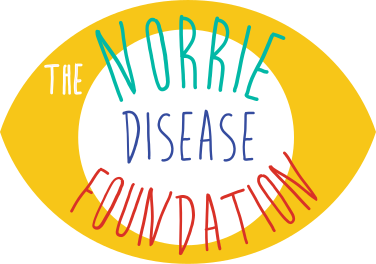This page is designed to give useful educational information and resource links. It is a space to share good ideas to help our young people.
We will try to make suggestions for a whole range of ages and abilities.

NDF Educational Settings Leaflet
The NDF Educational Settings Leaflet (ppt,1558kb) aims to provide general information about Norrie Disease (ND), its management and how to support the education of children and young people in schools and educational settings.
If you are the parent or carer of a child or young person with Norrie Disease, then you could use this guide to engage with the school or educational setting about your child’s needs.

Qualified Teacher of Visual Impairment
A great source of information for you will be your child’s QTVI (Qualified Teacher of Vision Impairment) or VI team. If you are not currently in touch with your local VI Team, you can get contact details and other information from their Local Offer website.
How to find your Local Offer website:
- type in the county/borough you live in followed by Local Offer into an internet search engine.
Pinterest is also a good source for getting ideas.

 Writing
Writing
Braille is a system of raised symbols that can be read by the fingers of people who are visually impaired.
A braille cell is made up of six dots, arranged in two parallel lines of three (like the arrangement of a six on dice or dominoes).
Parents, and those that may work with a child with a vision impairment, would ordinarily read braille with their eyes if they are sighted.
There are two types of braille:
The VI team that work with your child will be able to explain more to you about braille and how it will be taught to your child.
If you want to learn braille yourself, there are courses that you can pay to do with the RNIB – more information about the courses can be found on the RNIB website. www.rnib.org.uk
There is also a free online course that you can do, for more information click on the following link: www.uebonline.org
Children can learn to write Braille on a Perkins Brailler, this is a mechanical writing machine for producing braille.
Pre-braille skills
Prior to learning braille, children need to develop motor skills and touch discrimination. This is so that they can use their fingers to read the braille through touch. They also need to have enough strength in their fingers to be able to use a braille machine.
There are lots of fun activities to suit all ages and abilities, from playing with playdough, using peg boards, popping bubble wrap, squeezing toys, sorting shapes – the list goes on! Again if your child has a QTVI, they will have lots of suggestions of activities you can do with your child.
The Paths to Literacy website has a very useful article with suggestions of activities to help develop all the specific skills and strengths needed prior to reading braille. www.pathstoliteracy.org/resources/motor-activities-checklist-encourage-development-pre-braille-skills
Reading
ClearVision is a postal lending library of children’s books designed to be shared by visually impaired and sighted children and adults.
They have lovely tactile books and picture books that can be enjoyed by all.
Borrowing books from them is a great way to introduce children to feeling braille before they learn to read. www.clearvisionproject.org
The RNIB have a library that is free to join. Books are available in both grade 1 and grade 2 braille. They also have talking books available.
www.rniblibrary.com/iguana/www.main.cls?surl=a1